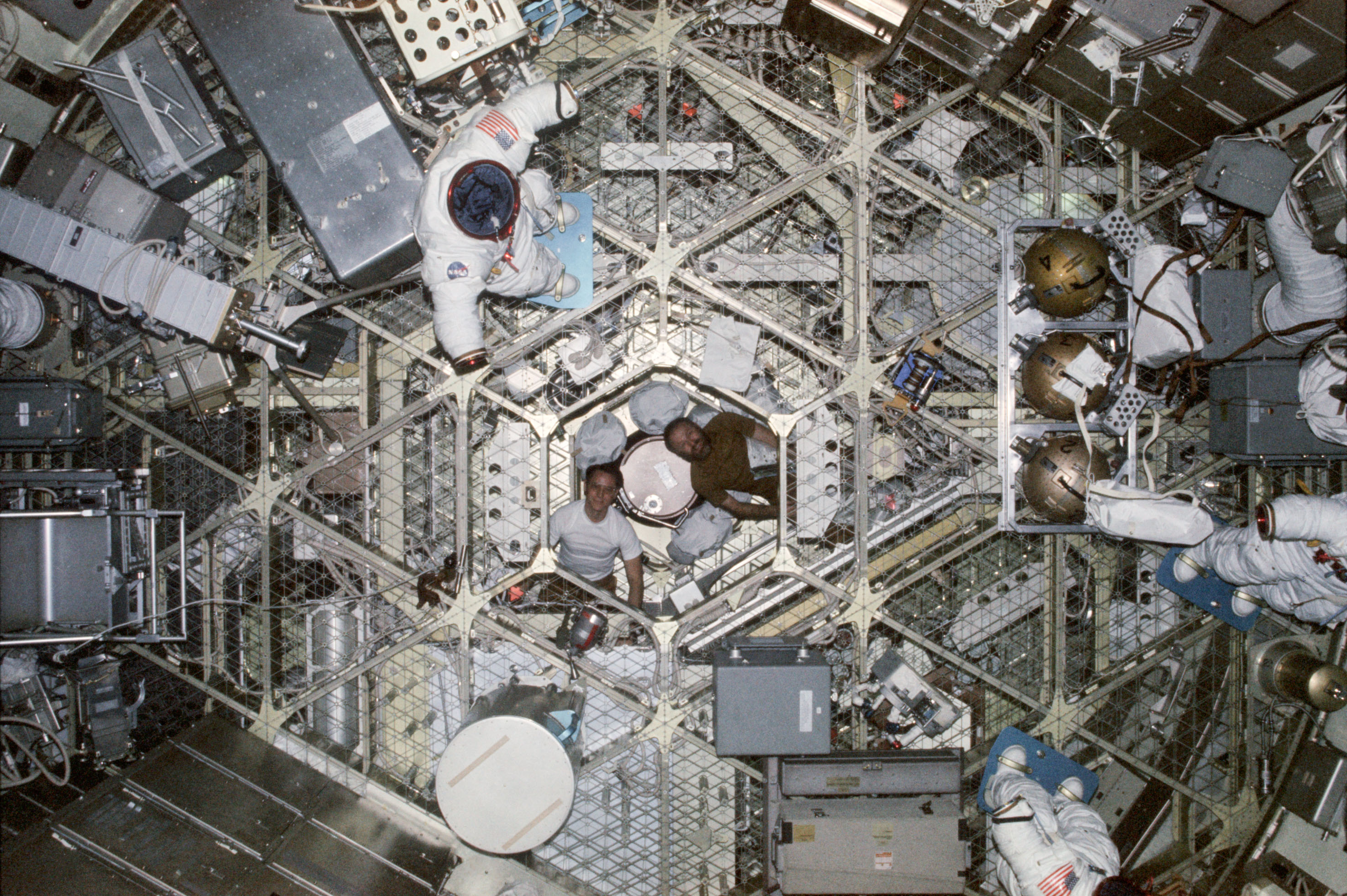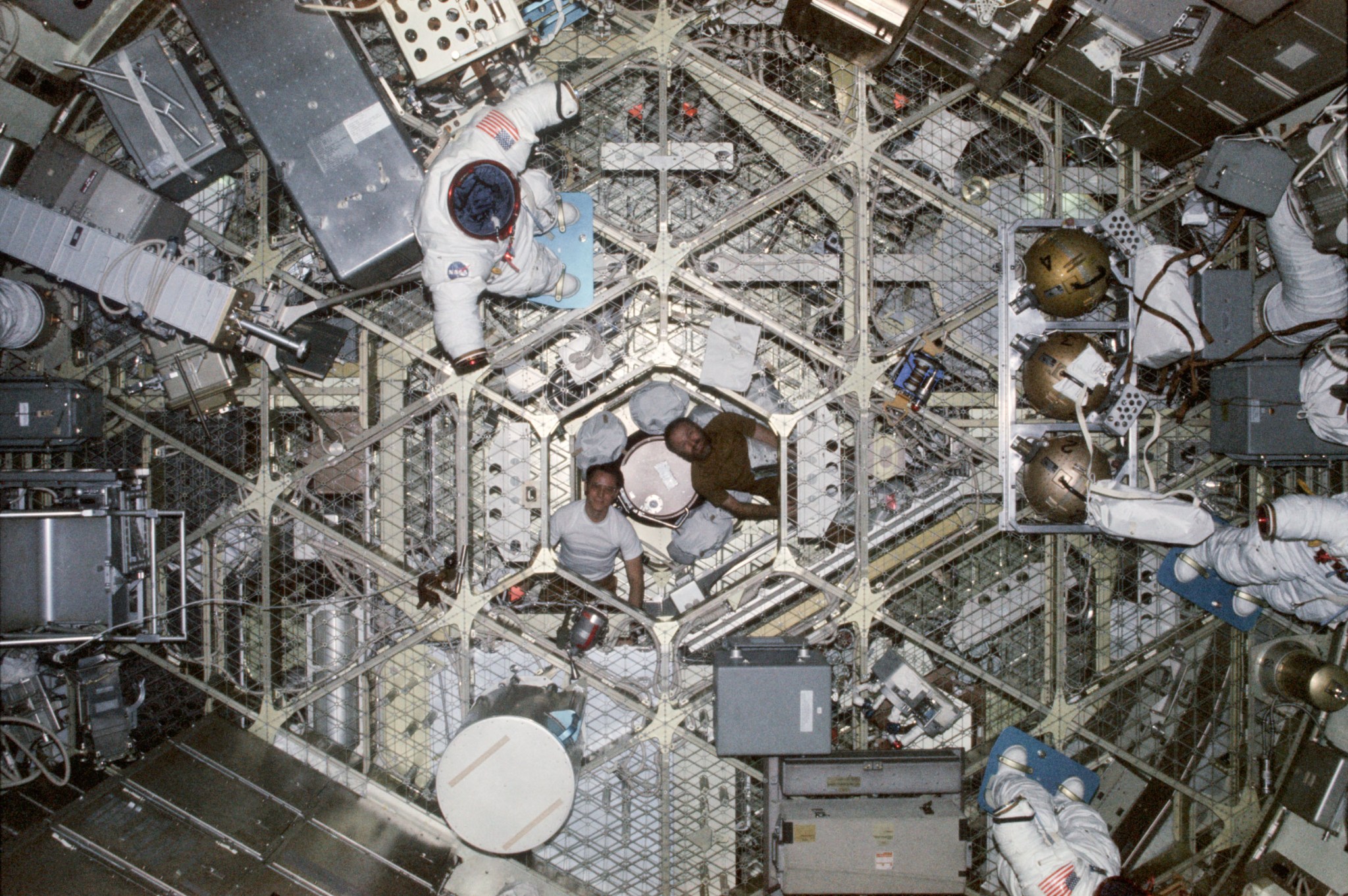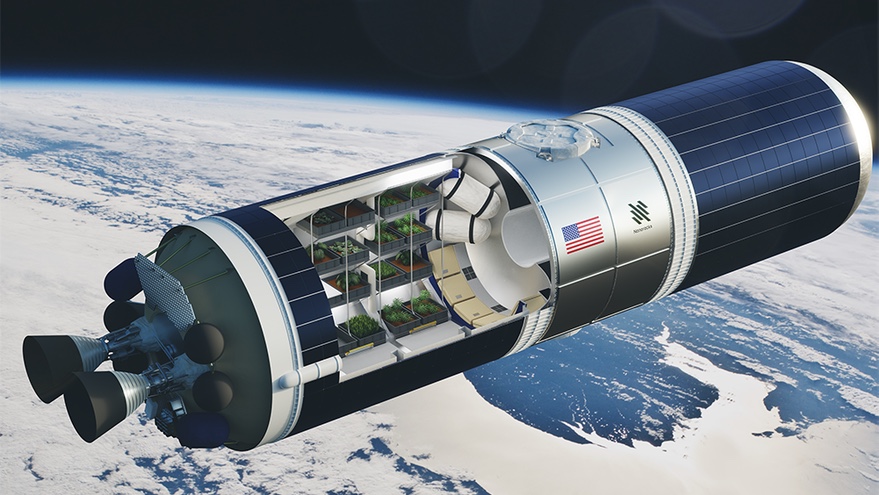A View Through Skylab
Astronaut William R. Pogue, Skylab 4 pilot, recorded this wide scene of his crewmates, astronauts Edward G. Gibson (left), science pilot, and Jerry P. Carr (right), commander, on the other end of the orbital workshop on Feb. 1, 1974. Also in the frame are parts of three spacesuits, used on several EVA sessions during the […]


Astronaut William R. Pogue, Skylab 4 pilot, recorded this wide scene of his crewmates, astronauts Edward G. Gibson (left), science pilot, and Jerry P. Carr (right), commander, on the other end of the orbital workshop on Feb. 1, 1974. Also in the frame are parts of three spacesuits, used on several EVA sessions during the third and final mission on the Skylab space station.
Skylab 4 launched on Nov. 16, 1973. Pogue, Gibson, and Carr were the first all-rookie crew since Gemini 8 in 1966. The crew continued the science program begun by the previous two Skylab crews, including biomedical investigations on the effects of long-duration space flight on the human body, Earth observations using the Earth Resources Experiment Package, and solar observations with instruments mounted on the Apollo Telescope Mount. Added to their science program were observations of the comet Kohoutek, discovered earlier in the year and predicted to make its closest approach to the Sun in December.
Image Credit: NASA/William R. Pogue





































